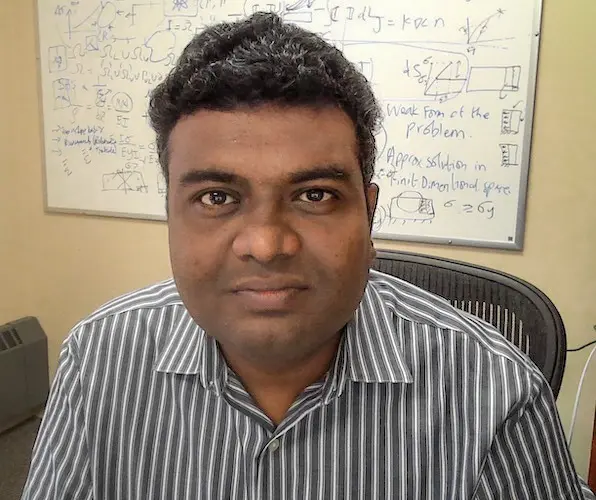Concussions can occur without any immediately noticeable symptoms—and as a result, it’s easy for many of these mild traumatic brain injuries to go undiagnosed.
That’s a problem, because detecting concussions early is important for mitigating an individual’s risk of suffering long-term health effects, including memory loss.
 Shiva Rudraraju
Shiva Rudraraju
However, much remains unknown about how concussions originate in the brain at the cellular level following a traumatic impact. And that lack of understanding has hindered researchers’ efforts to develop better solutions for detecting and preventing concussions.
Mechanical Engineering Assistant Professor Shiva Rudraraju aims to close that gap in understanding. He is leveraging his expertise in computational mechanics and biophysics to model the mechanical and electrical response of a neuron as it undergoes deformation and injury.
“We’re working on high fidelity modeling of single neuron physics and investigating how applying load on a neuron causes it to break down or fail, and how this translates into small-scale injury in the brain,” Rudraraju says.
Although it’s only a single cell, a neuron is quite complex. For example, a neuron has many structural layers, and different layers can experience different loading conditions. That can mean some layers fail while others remain functional. In addition, mechanical loading triggers a variety of chemical reactions inside a neuron. Injury can also affect a neuron’s ability to conduct electricity, a phenomenon that’s critical for memory and thinking.
Given the complex interplay of these various physical phenomena within a neuron, Rudraraju and his graduate students are developing a multiphysics-based theoretical and numerical representation of the structural elements of a single neuron.
“We’re focusing on the multiphysics coupling aspects, including mechanical loading, chemical diffusion, chemical reactions and electrical conduction, to gain a better understanding,” he says. “We want to quantify and develop a rigorous numerical model of this neuron multiphysics with respect to injury.”
Rudraraju says he ultimately wants to use the model to make predictions about small-scale brain injuries under different loading conditions. This capability could enable Rudraraju and his collaborators to provide practical information to clinicians and the public about the types of head motions and impacts that are most harmful to the brain.
Rudraraju is the principal investigator for a grant from the U.S. Office of Naval Research that will support this research and will help fund two graduate students along with the necessary computing infrastructure. This project is part of the PANTHER program, an interdisciplinary research initiative also funded by the U.S. Office of Naval Research that brings together scientists from academia, industry, and government to study traumatic brain injury through a range of approaches.
Rudraraju is collaborating with mechanical engineering colleague Christian Franck, who directs PANTHER and is a Grainger Institute for Engineering Professor at UW-Madison. In his lab, Franck conducts experiments at the micro and nanoscale to measure forces inflicted on neurons and quantify thresholds for brain injury. Rudraraju will use Franck’s experimental data to validate his numerical model and its predictions.
“I’m very excited about this project because of the real-world applications and potential to benefit human health,” Rudraraju says. “In addition, the field of neuroscience is fast evolving, and often has a good qualitative understanding of many sub-systems in the brain, including how neurons work, but they aren’t quantified to the point of being useful to model. This is an exciting opportunity to quantify some aspects of neuron functionality with rigorous numbers, which will help advance the field.”